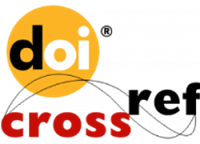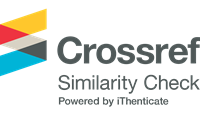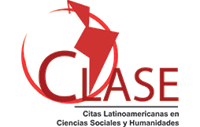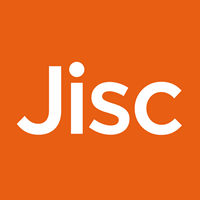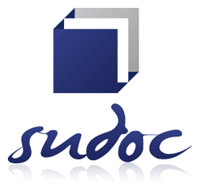Technological innovations of educational. Innovations of smart university type
Abstract
Technology is one of the important directions in the development of the society of the future, as it affects the higher education system as a whole, and is embedded in the concept of ‘S.M.A.R.T’, which is based on educational organizations of Smart University type. The purpose of the study presented in the article was to analyze the use of technological innovations in various areas of activity of educational organizations of Smart University type, their impact on the education sector as a whole. In this article, the concept of ‘Smart University’ is analyzed from various scientific points of view. In addition, a classification of technological innovations used in the main areas of activity of universities is presented in terms of the analysis of information and communication technologies and technological equipment/materials. A comparative analysis of the use of technological means in terms of information exchange, communication and equipping the security systems of the studied educational organizations has been carried out. Differences in technological innovation used by the world's leading universities: Polytechnic School of Lausanne (EPFL) in Switzerland, Massachusetts Institute of Technology (MIT) in the USA, Aalborg University (AAU) in Denmark, City University of Hong Kong (CityU) in China, Central Queensland University (CQU) in Australia and the Hamdan Bin Mohammed Smart University (HBMSU) in the UAE are identified. Depending on the amount of resources and capabilities of each of the universities, as well as considering the legislation of the countries, the studied universities trying to introduce the concept of “Smart University” into their activities cannot fully use it. The materials of this article can be used for further study of the Smart University concept related to the introduction of technological innovations in educational organizations of the world. Its implementation meets the needs of students and staff in a rapidly changing world. Of course, such a concept is one of the factors affecting the gradual outflow of the contingent from the world's leading universities in the global educational market, so the constant updating of educational services with new technologies is important.
Downloads
References
Aion, N., Helmandollar, L., Wang, M., & Ng, J. W. P. (2012). Intelligent campus (iCampus) impact study. International Conference on Web Intelligence and Intelligent Agent Technology Workshops, 6511695, 291-295. DOI: https://doi.org/10.1109/WI-IAT.2012.261
Amin, F. M., & Sundari, H. (2020). EFL students’ preferences on digital platforms during emergency remote teaching: Video conference, LMS, or messenger application? Studies in English Language and Education,7(2), 362-378. DOI: https://doi.org/10.24815/siele.v7i2.16929
Argenti, P. A., & Druckenmiller, B. (2004). Reputation and the Corporate Brand. Corporate Reputation Review, 6, 368-374. DOI: https://doi.org/10.1057/palgrave.crr.1540005
Babaeva, M. A. (2019). Online course (MOOC) “concepts of Modern Natural Science” on the National Platform of Open Education: Experience in teaching students. Journal of Physics: Conference Series, 1348(012003), 29-31. DOI: https://doi.org/10.1088/1742-6596/1348/1/012003
Daniela, L. (2019). Smart pedagogy for technology-enhanced learning. Didactics of Smart Pedagogy, 3-21. DOI: https://doi.org/10.1007/978-3-030-01551-0
Dziuban, C., Graham, C. R., Moskal, P. D., Norberg, A., & Sicilia, N. (2018). Blended learning: the new normal and emerging technologies. International Journal of Educational Technology in Higher Education, 15(3). DOI: https://doi.org/10.1186/s41239-017-0087-5
Global Innovation Index 2021 [GII]. (2021). Results. GII 2021 rankings overall and by pillar. Geneva, CH.
Hu, Z., & Zhao, F., & Zhao, X. (2020). Research on smart education service platform based on big data. In EBIMCS '20: Proceedings of the 2020 3rd International Conference on E-Business, Information Management and Computer Science (p. 228-233). DOI: https://doi.org/10.1145/3453187.3453340
Kaptur, V. (2015). Smart universities-the basis for the development of sustainable cities. Smart sustainable cities: technological trends, success stories and prospects, 2-8. Belarus. Retrieved from https://bitlybr.com/vpZB5S
Korzhuk, V. M., Popov, I. Y., & Vorobeva, A. A. (2019). Protected document flow. ITMO University. Part 1: Training manual, 67. Russia. Retrieved from https://books.ifmo.ru/file/pdf/2737.pdf
Lorenzo, N., Gallon, R., Palau, R., & Morgas, J. (2021) New objectives for smart classrooms from industry 4.0. Technology, Knowledge and Learning, 26, 719 -731. DOI: https://doi.org/10.1007/s10758-021-09527-0
Nuzzaci, A., & Vecchia, L. (2012). Smart university for a smart city. International Journal of Digital Literacy and Digital Competence, 3(2), 4-17. DOI: https://doi.org/10.4018/jdldc.2012100102
Petrova, K., Romanello, A., Medlin, B. D., & Vannoy, S. A. (2016). QR codes advantages and dangers. International Conference on e-Business and Telecommunications, 2, 112-115. DOI: https://doi.org/10.5220/0005993101120115
Selvik, J. T., Bansal, S., & Abrahamsen, E. B. (2021). On the use of criteria based on the SMART acronym to assess quality of performance indicators for safety management in process industries. Journal of Loss Prevention in the Process Industries, 70, 104392. DOI: https://doi.org/10.1016/j.jlp.2021.104392
Shi, L., & Bai, Q. (2011). Design a new coherent framework for human resource personnel evaluation information system based on tasks management. International Conference on Business Computing and Global Informatization, 6003953, 479-481. DOI: https://doi.org/10.1109/BCGIn.2011.126
Tariq, H., & Agarwal, P. (2020). Secure keyword search using dual encryption in cloud computing. International Journal of Information Technology, 12, 1063-1072. DOI: https://doi.org/10.1007/s41870-018-0091-6
Wahid, F., Ismail, L. H., Ghazali, R., Ghazali, R., & Aamir, M. (2019). An efficient artificial intelligence hybrid approach for energy management in intelligent buildings. KSII Transactions on Internet and Information Systems, 13(12), 5904-5927. DOI: https://doi.org/10.3837/tiis.2019.12.007
Zahda, F. H., & Natsheh, M. N. (2018). The effect of using computerize software to solving the problem of fractions learning case study: economic course. Colloquium in Information Science and Technology, 8596648, 357-361. DOI: https://doi.org/10.1109/CIST.2018.8596648

This work is licensed under a Creative Commons Attribution 4.0 International License.
DECLARATION OF ORIGINALITY AND COPYRIGHTS
I declare that this article is original and has not been submitted for publication in any other national or international journal, either in part or in its entirety.
The copyright belongs exclusively to the authors. The licensing rights used by the journal are the Creative Commons Attribution 4.0 (CC BY 4.0) license: sharing (copying and distributing the material in any medium or format) and adaptation (remixing, transforming, and building upon the material thus licensed for any purpose, including commercial purposes) are permitted.
It is recommended that you read this link for more information on the subject: providing credits and references correctly, among other crucial details for the proper use of the licensed material.










